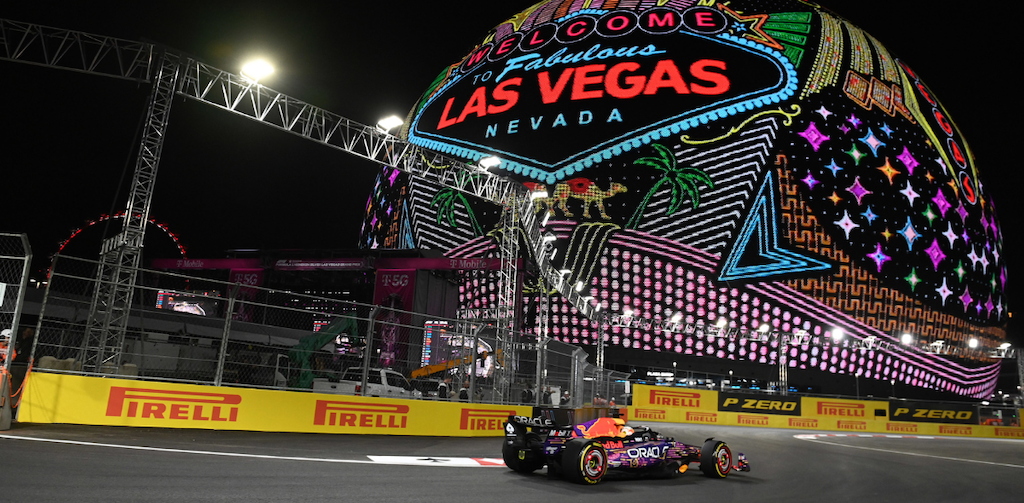Formula One has long pursued the elusive goal of “cracking America,” as famously phrased by former F1 supremo Bernie Ecclestone. Despite significant efforts, F1 has historically played second fiddle in the United States to NASCAR and IndyCar — the latter boasting its prestigious Indianapolis 500 event that captivates the nation each May.
However, things are changing. Anecdotal evidence suggests growing interest and knowledge of F1 among American fans. One such example comes from a recent encounter where an American fan engaged deeply in a technical discussion about drivers and the sport’s future, illustrating the expanding footprint of Formula One in the U.S.
Is a Fourth U.S. Grand Prix Coming?
Speculation around a potential fourth race in the U.S. continues to swirl. This idea gains traction when comparing to the Middle East, a region with limited motorsport heritage but currently hosting four Grand Prix events. These nations invest heavily in sports as a vehicle to diversify economies and boost tourism amid an uncertain oil market future.
Despite these ambitions, insiders caution that “more is not always better.” The fantasy of F1 cars racing through New York’s 5th Avenue or Central Park has been discussed but seems unlikely. The consensus within the paddock leans toward maintaining three U.S. races as adequate for the near term.
Audience and Growth Statistics
In 2024, the U.S. boasted 52 million Formula One fans — a significant number by any measure, though dwarfed by the sport’s global audience of 826 million. Remarkably, the 2024 season saw a 90 million increase in viewership compared to 2023, buoyed by Red Bull Racing and Max Verstappen’s record-breaking dominance.
With 24 race weekends scheduled for the second consecutive year, F1 now has one of the longest calendars in its history. Yet, further expansion by simply adding races is hitting logistical and operational limits, acknowledged even by the sport’s U.S. rights holders.
Strategic Growth Beyond More Races
In its 75th year, Formula One seeks to sustain growth by expanding its global footprint thoughtfully rather than adding more races annually. McLaren Racing CEO Zak Brown recently shared his vision on a Bloomberg podcast: maintaining 20 fixed Grand Prix events complemented by 8 rotating races to reach new markets without overextending the calendar.
Brown also highlighted the untapped growth potential in North America, where NASCAR still dominates with three times the U.S. race weekend viewership compared to F1. However, when considering global reach, Formula One clearly leads in motorsport viewership and sponsorship interest, attracting new brands like Google and Goldman Sachs.
Challenges and Opportunities Ahead
Despite its soaring popularity, Formula One faces challenges in matching the franchise value and scale of major U.S. sports leagues such as the NBA, MLB, and NFL. Brown remains optimistic about recent developments, including Netflix’s Drive to Survive series and upcoming films like the Brad Pitt F1 movie, which are broadening the sport’s appeal to youth, women, and more diverse audiences.
However, the sport’s future success hinges on navigating the critical 2026 season, which introduces the most significant car and engine regulation changes in F1 history. Should these changes falter, the sport risks alienating fans and stalling growth. Competitive, thrilling racing must remain the core focus for Formula One’s continued global expansion.
What This Means for the Sport
Formula One’s strategic decision to maintain a balance between calendar expansion and quality racing marks a critical juncture for its global growth, particularly in the United States. While the U.S. market presents enormous potential — with millions of new fans and increasing commercial investment — it is clear that success will not come from merely adding more races. Instead, F1 must continue to innovate in fan engagement, media partnerships, and diversity initiatives.
The move toward rotating Grand Prix events offers a flexible model that can tap emerging markets like India, South Africa, and Korea, spreading F1’s appeal worldwide without diluting existing events. Meanwhile, the sport’s reliance on blockbuster content such as Drive to Survive illustrates how modern storytelling and digital platforms are crucial to reaching younger, more diverse audiences.
Ultimately, Formula One’s future “not in the USA” is less about rejecting the American market and more about recognizing that sustainable growth requires a global, multi-faceted approach. If F1 can master this balance, it will secure its position as the premier motorsport worldwide — combining thrilling competition with innovative marketing and strategic market expansion.


